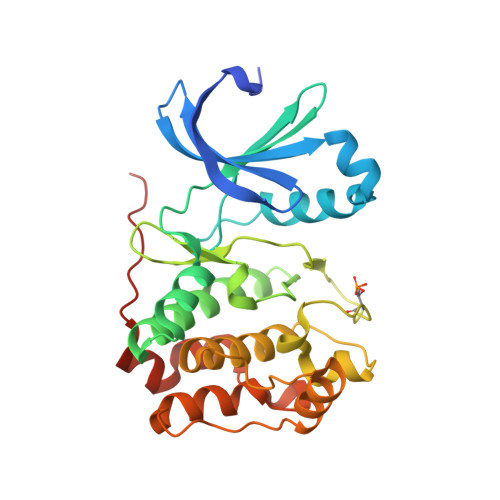Mechanism of Aurora B Activation by Incenp and Inhibition by Hesperadin
Sessa, F., Mapelli, M., Ciferri, C., Tarricone, C., Areces, L.B., Schneider, T.R., Stukenberg, P.T., Musacchio, A.(2005) Mol Cell 18: 379
- PubMed: 15866179
- DOI: https://doi.org/10.1016/j.molcel.2005.03.031
- Primary Citation of Related Structures:
2BFX, 2BFY - PubMed Abstract:
Aurora family serine/threonine kinases control mitotic progression, and their deregulation is implicated in tumorigenesis. Aurora A and Aurora B, the best-characterized members of mammalian Aurora kinases, are approximately 60% identical but bind to unrelated activating subunits. The structure of the complex of Aurora A with the TPX2 activator has been reported previously. Here, we report the crystal structure of Aurora B in complex with the IN-box segment of the inner centromere protein (INCENP) activator and with the small molecule inhibitor Hesperadin. The Aurora B:INCENP complex is remarkably different from the Aurora A:TPX2 complex. INCENP forms a crown around the small lobe of Aurora B and induces the active conformation of the T loop allosterically. The structure represents an intermediate state of activation of Aurora B in which the Aurora B C-terminal segment stabilizes an open conformation of the catalytic cleft, and a critical ion pair in the kinase active site is impaired. Phosphorylation of two serines in the carboxyl terminus of INCENP generates the fully active kinase.
- Department of Experimental Oncology, European Institute of Oncology, Via Ripamonti 435, 20141 Milan, Italy.
Organizational Affiliation:



















